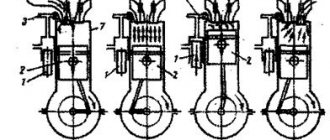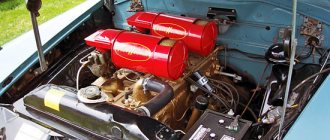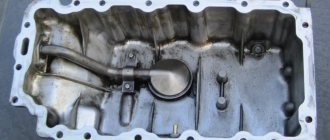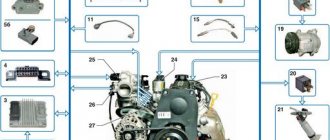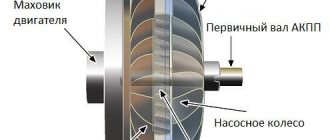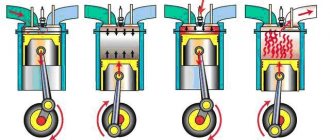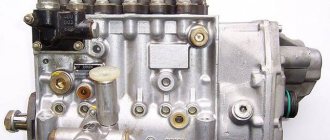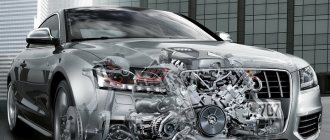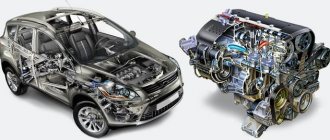From the history
The first internal combustion engine was the De Rivaz power unit, named after its creator Francois de Rivaz, originally from France, who designed it in 1807.
This engine already had spark ignition; it had a connecting rod, with a piston system, that is, it was a kind of prototype of modern engines.
57 years later, de Rivaz’s compatriot Etienne Lenoir invented a two-stroke unit. This unit had a horizontal arrangement of its only cylinder, had spark ignition and worked on a mixture of lighting gas and air. At that time, the work of the internal combustion engine was already sufficient for small-sized boats.
Another 3 years later, the German Nikolaus Otto became a competitor, whose brainchild was a four-stroke naturally-aspirated engine with a vertical cylinder. The efficiency in this case increased by 11%, in contrast to the efficiency of the Rivaz internal combustion engine, it became 15 percent.
A little later, in the 80s of the same century, the Russian designer Ogneslav Kostovich first launched a carburetor-type unit, and engineers from Germany Daimler and Maybach improved it into a lightweight form, which began to be installed on motorcycles and vehicles.
In 1897, Rudolf Diesel introduced the internal combustion engine using compression ignition, using oil as fuel. This type of engine became the ancestor of diesel engines that are still in use today.
What is an internal combustion engine and why is it needed?
Engine device
For a vehicle to move, something must set it in motion. At different times, these were harnessed animals, then they were replaced by steam and electric engines (yes, the ancestors of modern cars appeared even earlier than traditional internal combustion engines), then engines running on combustible fuel.
A modern internal combustion engine is a mechanism that converts the energy of a fuel flash (heat) into mechanical work. Despite its rather cumbersome design, today the internal combustion engine remains the most convenient source of energy.
Electric vehicles, of course, are becoming more and more common, but the time it takes to “refuel” them negates all the advantages - you can’t put a canister of electricity in the trunk.
ICE has found its application in many areas: cars, motorcycles and scooters, agricultural and construction equipment, water transport, aircraft engines, military equipment, lawn mowers operate on the same principle... That is, almost everything that drives or flies.
Piston: it all starts from here
Piston cycle: diagram
We invite you to watch an entertaining video that explains and shows in detail exactly how the internal combustion engine of a car works:
For example, when the tachometer in your car approaches 2000 rpm. (2 thousand crankshaft revolutions), this means that the piston makes 4000 strokes during this time, and the mixture enters the cylinder 1000 times! All this in a minute. And only for one cylinder. Now think about how much fuel the engine needs if you “shoot” it all the time, accelerating to 6000 rpm with the gas pedal pressed to the floor!
Internal combustion engine structure
Despite the variety of types and designs of internal combustion engines, the principle of its design remains virtually unchanged on any vehicle. Of course, individual design elements may differ greatly on different engines, but the main components and components are very similar to each other.
So, an internal combustion engine consists of such structural components.
- The cylinder block (BC) is the “shell” of the CPG and the entire engine as a whole, including the cooling system jacket.
Cylinder block - The crank mechanism, also known as the crank mechanism, is a unit in which the linear motion of the piston is converted into rotational motion. It consists of a crankshaft, pistons, connecting rods, a flywheel, as well as plain bearings (liners) on which the crankshaft and connecting rod mountings rest.
Crank mechanism: 1 - cylinder; 2 - flywheel; 3 — connecting rod bearing; 4 - crankshaft; 5 - knee; 6 — main bearing; 7 — connecting rod. - The gas distribution mechanism (GDM) is a system for supplying the fuel-air mixture to the cylinders and removing exhaust gases. It consists of camshafts, valves with rocker arms or rods, and a timing belt, thanks to which the entire system operates synchronously with the crankshaft speed.
Gas distribution mechanism - The power system is a unit in which the fuel-air mixture is prepared, which is then supplied to the combustion chambers. Depending on the design, the fuel supply system can be carburetor (one injector per engine), injection (injectors are installed in front of the intake valve of each cylinder), or direct injection (the injector is installed inside the combustion chamber). Includes a fuel tank with filter and pump, carburetor (optional), intake manifold, injectors, injection pump (in diesel engines), air intake with air filter.
Supply system - Engine lubrication system - ensures the supply of lubricant to each of the friction units, as well as to areas that require additional cooling (for example, to the lower part of the pistons). It consists of an oil pump connected to the crankshaft, a system of tubes and channels leading to friction pairs, an oil filter, and an oil pan. Depending on the design, engines with a “dry” and “wet” sump differ. In the former, the container for collecting engine oil is located separately, in the latter - directly under the engine. Engine lubrication system: 1 – oil pump; 2 – crankcase drain plug; 3 – oil receiver; 4 – pressure reducing valve; 5 – hole for lubrication of timing gears; 6 – sensor for emergency oil pressure warning light; 7 – oil pressure indicator sensor; 8 – oil radiator valve; 9 – oil radiator; 10 – oil filter.
- Ignition system - needed to ignite the fuel mixture in the combustion chamber. It is used only on gasoline engines, since diesel fuel ignites itself from compression. Includes spark plugs, high-voltage wires, ignition coils, as well as a distributor (distributor) on older type engines. In modern engines, the ignition system does without a distributor and even without wires: a “coil-on-plug” design is used. Engine ignition system: 1 – generator; 2 – ignition switch; 3 – ignition distributor; 4 – breaker cam; 5 – spark plugs; 6 – ignition coil; 7 – battery.
- Cooling system – takes care of maintaining the specified operating temperature of the engine. The liquid cooling system consists of a coolant (coolant, antifreeze), a cooling jacket (a network of chambers and channels inside the cylinder block), a heat exchanger (cooling radiator), a water pump and a thermostat.
Cooling system - The electrical system is the source of energy needed to start the engine and keep it running. The electrical system includes the battery, alternator, starter, wiring and engine sensors.
- Exhaust system - removes combustion products from the engine, performs the function of exhaust gas after-treatment, and regulates the sound of the engine. Consists of an exhaust manifold, catalyst and particulate filter (optional), resonator, muffler.
Exhaust system
Each of these parts is gradually developed and improved depending on the needs of the time.
The desire to increase power gave way to the search for the most reliable and durable solutions, then fuel economy came first, and today, concern for the environment.
How does the ignition system work?
The ignition system produces a high voltage charge and transfers it to the spark plugs using ignition wires. The charge first goes to the ignition coil (a distributor that distributes the spark to the cylinders at a certain time), which you can easily find under the hood of most cars. The ignition coil has one wire running in the center and four, six, eight wires or more depending on the number of cylinders that come out of it. These ignition wires send a charge to each spark plug. The engine receives a spark that is timed in such a way that only one cylinder receives a spark from the distributor at one time. This approach ensures maximum engine smoothness.
Engine operating principle
All internal combustion engines, no matter what their design, use the same operating principle. This is the conversion of thermal expansion energy during fuel combustion, first into linear and then into rotational motion.
Four stroke engine strokes
Four-stroke engines are used in all automobiles, large equipment, and aviation. This is the so-called classic type of internal combustion engine, to which designers pay all their attention. Conventionally, the work of each cylinder in the CPG can be divided into 4 stages (stroke). These are intake, compression, combustion, exhaust. The video below clearly shows the operation of a 4-stroke engine in 3D animation.
- During the intake stroke, the piston moves downward in the cylinder, away from the valves and toward bottom dead center (BDC). When it begins to descend, the intake valve opens and a fuel-air mixture (or only air, if the engine has direct injection) enters the cylinder. When moving, the piston itself “pumps” the required volume of air into the combustion chamber if the engine is atmospheric, or the air enters under pressure if a turbocharger is installed.
- Having reached bottom dead center, the piston begins to rise. At the same time, the intake valve closes, and as it moves, the piston compresses the air with the fuel atomized in it to a critical pressure.
- As soon as the piston conventionally reaches top dead center and compression becomes maximum, the spark plug fires and the fuel ignites (diesel fuel ignites during compression itself, without a spark). The micro-explosion from the flash pushes the piston down again to BDC.
- And on the fourth stroke the exhaust valve opens. The piston moves upward again, squeezing exhaust gases from the combustion chamber into the exhaust manifold.
Four-stroke engine operation
In fact, there is only one stroke out of four useful work in the engine, when the combustion of fuel creates excess pressure that pushes the piston. The remaining three beats are needed as auxiliary ones, which do not provide an impulse to movement, but energy is spent on them.
Under such conditions, the engine could stop when the crank mechanism (CPM) reaches energy equilibrium. But to prevent this from happening, a large flywheel is used, connected to the clutch system, and counterweights on the crankshaft, balancing the loads from the pistons.
Stroke of a two-stroke engine
Two-stroke engines are not widely used. These are mainly motors for scooters and mopeds, light motor boats, and lawn mowers. The entire working process of such an engine can be divided into two main stages:
- At the beginning of the piston movement from bottom to top (from bottom to top dead center), a fuel-air mixture enters the combustion chamber. As the piston rises, it compresses it to critical compression, and when it is at top dead center, ignition occurs.
- When fuel burns, it pushes the piston down, while simultaneously opening access to the exhaust manifold and combustion products leaving the cylinder. As soon as the piston reaches bottom dead center (BDC), the first stroke is repeated - intake and compression simultaneously.
Operation of a two-stroke engine
It would seem that a two-stroke engine should be twice as efficient as a four-stroke engine, because here the useful action accounts for half the work. But in reality, the power of a two-stroke engine is much lower than we would like, and the reason for this lies in the imperfect gas distribution mechanism.
When fuel burns, part of the energy goes into the exhaust manifold, without doing any work other than heating. As a result, two-stroke engines are used only in low-power vehicles and require special motor oils.
Types of engines
- Carburetor-type gasoline engines operate on fuel mixed with air. This mixture is pre-prepared in the carburetor and then enters the cylinder. In it, the mixture is compressed and ignited by a spark from the spark plug.
- Injection engines differ in that the mixture is supplied directly from the injectors to the intake manifold. This type has two injection systems - mono-injection and distributed injection.
- In a diesel engine, ignition occurs without spark plugs. The cylinder of this system contains air heated to a temperature that exceeds the ignition temperature of the fuel. Fuel is supplied to this air through a nozzle, and the entire mixture is ignited in the form of a torch.
- A gas internal combustion engine has a thermal cycle principle; the fuel can be either natural gas or hydrocarbon gas. The gas enters the reducer, where its pressure is stabilized to operating pressure. Then it enters the mixer, and eventually ignites in the cylinder.
- Gas-diesel internal combustion engines operate on the principle of gas engines, only unlike them, the mixture is ignited not by a spark plug, but by diesel fuel, the injection of which occurs in the same way as in a conventional diesel engine.
- Rotary piston types of internal combustion engines are fundamentally different from others by the presence of a rotor that rotates in a chamber shaped like a figure eight. To understand what a rotor is, you need to understand that in this case the rotor plays the role of a piston, timing belt and crankshaft, that is, there is no special timing mechanism here at all. With one revolution, three working cycles occur at once, which is comparable to the operation of a six-cylinder engine.
How does the starting system work?
Improving the performance of your engine is a big deal, but what's more important is what exactly happens when you turn the key to start it! The starting system consists of a starter with an electric motor. When you turn the ignition key, the starter turns the engine several revolutions so that the combustion process begins its work, and it can only be stopped by turning the key in the opposite direction when the spark stops flowing to the cylinders, and thus the engine stalls.
We see that the starter needs a lot of energy. The car most often uses a 12-volt electrical system, and hundreds of amps of electricity must flow to the starter.
The most common types of engines
There are three types of internal combustion engines: piston, rotary-piston power unit of the Wankel system and gas turbine. With rare exceptions, modern cars are equipped with four-stroke piston engines. The reason lies in the low price, compactness, light weight, multi-fuel capability and the ability to be installed on almost any vehicle.
The car engine itself is a mechanism that converts the thermal energy of burning fuel into mechanical energy, the operation of which is ensured by many systems, components and assemblies. Piston internal combustion engines are two-stroke and four-stroke. The easiest way to understand the operating principle of a car engine is to use the example of a four-stroke single-cylinder power unit.
A four-stroke engine is called because one working cycle consists of four piston movements (strokes) or two revolutions of the crankshaft:
- inlet;
- compression;
- working stroke;
- release.
How does a car engine work?
So how does it work and why? What makes a car produce a pleasant symphony of sounds when you turn the key in the ignition? How is it possible that an engine can drive wheels? It would be difficult to describe consistently all existing types of engines in the world. However, there is a diagram that, with the exception of a few cases, remains unchanged and which is the easiest to explain how a car engine works, that is, the type of motor that burns gasoline, diesel fuel or oil.
How does a two-stroke engine work?
It was mentioned above that piston engines are divided into both 4-stroke and 2-stroke. The operating principle of the latter is slightly different from what was described earlier. And the design of such a unit itself is much simpler than the previous design. In a two-stroke unit there are only two windows in the cylinder - inlet and outlet. The second is located slightly above the first, and what it is for will now be explained.
At the beginning of the first stroke, the piston, which previously blocked the inlet port, begins to move upward, as a result of which it blocks the fuel inlet port. At the same time, the piston continues to descend, which leads to compression of the working mixture. As soon as the part reaches the desired position, the first spark is formed on the candle, and the created mixture is immediately ignited, igniting. The inlet window is already opening at this point. It passes the next portion of fuel and air, continuing the operation of the mechanism.
The beginning of the second stroke is characterized by a change in the direction of movement of the piston - it begins to move downward. It is acted upon by gases that tend to expand the available space. The piston moves, opening the inlet window, and the gases remaining after combustion of the mixture escape, allowing a new portion of fuel inside.
Some of the working mixture also leaves the cylinder through the open exhaust valve. Therefore, it becomes clear why two-stroke engines require so much fuel.
Advantages and disadvantages
The advantage of two-stroke piston units is the achievement of high power with a small displacement when compared with four-stroke units. However, the car owner will suffer from impressive fuel consumption, which is why the idea of changing the unit will soon arise in his head.
Also, the advantages of two-stroke internal combustion engines include a simple design, clear and uniform operation, low weight and compact size. The disadvantages include dirty exhaust, a lack of various systems, as well as rapid wear of structural parts. Quite often, owners of cars with such an engine complain about overheating of the unit and its breakdown.
Four-stroke internal combustion engine
The number of operating cycles is one of the most important characteristics of any internal combustion engine. The following is a description of the interaction of the piston with the valves in turn in each stroke. Let us remember that 1 cycle is 4 clock cycles.
In the first stroke, the mixture is injected. The fuel is mixed with air. The piston moves to its highest point. An area of low pressure—a vacuum—is created in the combustion chamber. The inlet valve opens a hole in the chamber to supply the mixture. The crankshaft begins its first revolution.
In the second stroke the mixture is compressed. The inlet valve closes. The piston, having reached its highest point, compresses the enriched fuel mixture. The crankshaft completes its first revolution.
The working stroke is performed in the third stroke. The enriched mixture is set on fire. In gasoline engines, ignition is performed by an electric arc from a spark plug. In diesel engines, the fuel ignites on its own during the compression process. The cloud of expanding gases causes the piston to move downward. Beginning of the second revolution of the crankshaft.
In the fourth beat, release occurs. The exhaust valve opens. Gases are discharged into the collector and then released outside. The piston begins to move upward. The shaft completes its second revolution.
Thus, in 1 working cycle this engine completes 4 strokes, during which the shaft rotates twice.
Video: The principle of operation of a four-stroke engine
Advantages and disadvantages
Internal combustion engines have many advantages:
- convenience and ease of use;
- fuel availability;
- fast refueling;
- durability;
- maintaining performance even after several maintenance.
In addition, for many car owners, the sound of the engine is the best music. Knowing this, manufacturers configure them in a special way.
But the units also have disadvantages:
- lower efficiency compared to electric models;
- complexity of the system.
Modern models can no longer be repaired and serviced independently in a garage. But the more complex the design, the more weak points it remains. This means maintenance will have to be done more and more often.
The environmental aspect also requires mention. Many European cities are suffocated by gasoline smog and do not see sunlight. Therefore, environmental safety requirements are regularly tightened.
Internal combustion engines do not lose their position over time. Despite the fact that engineers and inventors are struggling to create fundamentally new motors, this issue has not yet been resolved. This means that in the coming years, humanity will continue to use the same familiar, reliable and convenient units.
Engine classification
The design of internal combustion engines is constantly being improved. Developers are introducing new ideas, and the emergence of more advanced materials opens up additional opportunities. Taking these features into account, many types of engines have been developed, classified by design.
Depending on the characteristics of the operating cycle, internal combustion engines can be:
- push-pull;
- four-stroke.
The operating features and differences of such motors were discussed above.
Based on the type of structural device, motors are divided into two groups:
- piston - the most common type, familiar to most car owners, in which the unit consists of a crankshaft and pistons moving in the cylinders;
- rotary-piston - the operating principle of which was invented by Wankel.
In the Wankel engine, instead of the usual pistons, a triangular rotor is used, dividing the cylindrical combustion chamber into three compartments, with cyclic processes for each of them.
The rotary piston unit is not very common. Such motors were installed on some car models. But the insufficient efficiency of the design led to the fact that this idea was subsequently abandoned
Engines are divided by the number of cylinders. Their total number can vary from 1 to 16. But the most common power plants use from 3 to 8 cylinders. The more cylinders an engine contains, the higher its power. But at the same time we have to solve additional problems of cooling, fuel distribution, etc.
More often, motors with an even number of combustion chambers are used to balance and balance the operation of the unit. However, some Ford models have unique three-cylinder engines.
The cylinders in engines are arranged in different orders. The row arrangement is the simplest in terms of maintenance, but not the most advantageous in terms of the overall layout of the unit.
Based on the order of the cylinders, engines are distinguished with the following placement:
- in-line - when the cylinders are installed in a row and connected to a common crankshaft;
In automotive technology, the most widespread are various types of V-shaped design, including similar types of devices. Radial motors are used on airplanes. Other types of power plants are used to a limited extent.
Taking into account the type of fuel, internal combustion engines are distinguished:
- gasoline - using gasoline ignited by a spark from spark plugs and ignition coils synchronized with the rotation of the crankshaft; such motors develop the highest speed;
- diesel - in such engines the fuel-air mixture ignites spontaneously when the pressure reaches a critical level; there are no spark plugs here, but direct injection is used when fuel is supplied under high pressure, taking into account the characteristics of the environment in the compression chamber; characterized by high power at limited speed; mainly installed on heavy equipment;
- gas - run on liquefied gas, which is cheaper than gasoline; require higher temperatures, which requires certain design solutions and special types of lubricating fluid;
- hybrid – combine the use of an internal combustion engine with an electrical installation; under normal conditions, the electric motor is used, the internal combustion engine is used to recharge the batteries or when the load on the power plant increases;
- hydrogen - used relatively recently, due to increased danger, requiring appropriate design solutions; when water is decomposed into hydrogen and oxygen by electrolysis, there is a high risk of an unstable state of the environment, with the danger of explosion; not so long ago they invented a new method - with separate supply of these gases; oxygen is taken from the air, and tanks placed on the car are filled with hydrogen; As a result, the work process is the reverse of electrolysis, with the generation of electricity and the formation of water from the connection of elements during operation.
Gasoline engines are the most widespread. But, according to most scientists and designers, the future of technology development lies with new hybrid and hydrogen installations. These engines are becoming more and more improved, but time will tell how effective their use will be.
The gas distribution mechanism controls the operation of the engine by opening and closing valves to inject the fuel-air mixture. The valves operate from a camshaft driven by a crankshaft via a chain or belt.
The engine layout may include one camshaft with in-line cylinder placement, or several (from two to four) with a V-shaped one.
As technology developed, the traditional mechanical injection system was replaced by an electronic one, where the moment of valve opening is determined by a computer unit. In this regard, adaptive and pneumatic modules are used, adding up to 30 percent efficiency in engine power indicators.
Motors are divided according to the principle of supplying air to the combustion chambers. The following power plants are distinguished:
- atmospheric - traditional internal combustion engine, where air is pumped into the cylinder chamber by a piston;
- turbine - when using additional pumping.
A turbocharger uses the energy of exhaust gases, rotating the turbine, which additionally pumps air in a forced manner.
The advantages of turbocharged engines are increased power due to increased air flow. The disadvantages are the excessive complexity of the structural design.
Gasoline and diesel engines: what are the fundamental differences?
What is the main difference between a gasoline engine and a diesel engine? We are talking about the principle of ignition. Gasoline engines have spark ignition, diesel engines are self-propelled. What do these words mean?
Gasoline engines use a spark generated at the spark plug to explode the cylinder. With diesel engines, everything is completely different. In a diesel engine, the air in the cylinder is compressed by the piston much more strongly. So much so that a high temperature is created inside, sufficient to explode the mixture in the cylinder without a spark. Gasoline does not ignite due to high pressure; diesel fuel, on the contrary, does not burn under normal conditions from an ordinary spark.
Engines also differ in the arrangement and number of cylinders. In Europe, the most popular are in-line engines - as the name suggests, the cylinders in which the pistons move are arranged in a row. An inline four-cylinder engine would be labeled R4, a six-cylinder R6, etc. Now imagine that Lamborghini was going to mount a big 12-cylinder engine under the hood of its model. If the manufacturer wanted to install all the cylinders in one row, the engine would take up a lot of space. Thus, another solution was invented - a branched arrangement of cylinders in two rows, at an angle of 60, 90 and even 180 degrees (opposite engine). All engines of this type are designated by the letter V, in this case it will be the V12 engine. However, V6 and V8 installations are more popular. Such cars were manufactured in the middle of the last century in the USA; after the financial crisis, they were considered insufficiently justified.
These “demonic”, truly powerful, productive engines are less common and can be found, most often, in Subaru or Porsche. Here the pistons are located on both sides of the crankshaft, facing each other, which makes the entire engine, compared to others, very flat, but no less voluminous.
In-line engine
When it comes to the piston device, there is another type of engine that is quite different from the rest. This is an engine with a single vortex piston, the so-called Wankel Engine. There are also special rotary motors (cylinders are arranged in a circle), spherical motors (the piston does not move translationally, but describes a sphere) and many other inventions.
Author of the article–>
In everyday life, we are surrounded by many electrical appliances. The main element of some of them is the engine. In one of our articles, we already talked about how an AC motor works and works. Today in our article we will look at the design and principle of operation of a DC motor.
Engine cycles
A cycle refers to actions that are repeated in a separate cylinder. The four-stroke engine is equipped with a mechanism that ensures the operation of each of these cycles.
In an internal combustion engine, the piston performs reciprocating movements (up/down) along the cylinder. The connecting rod and the crank attached to it convert this energy into rotation. During one action - when the piston reaches from the bottom to the top and back - the crankshaft makes one revolution around its axis.
For this process to occur continuously, an air-fuel mixture must enter the cylinder, it must be compressed and ignited in it, and combustion products must also be removed. Each of these processes occurs during one revolution of the crankshaft. These actions are called ticks. There are four in total in the four-stroke:
- Inlet or suction. During this stroke, the air-fuel mixture is sucked into the cylinder cavity. It enters through the open inlet valve. Depending on the type of fuel system, gasoline is mixed with air in the intake manifold or directly in the cylinder, as in diesel engines;
- Compression. At this point, both the intake and exhaust valves are closed. The piston goes up due to the rotation of the crankshaft, and it rotates due to the execution of other strokes in adjacent cylinders. In a gasoline engine, the VTS is compressed to several atmospheres (10-11), and in a diesel engine - more than 20 atmospheres;
- Working progress. At the moment when the piston stops at the very top, the compressed mixture is ignited using a spark from the spark plug. In a diesel unit, this process is somewhat different. The air in it is compressed so much that its temperature rises to a value at which diesel fuel ignites on its own. Once the mixture of fuel and air explodes, the released energy has nowhere to go and moves the piston down;
- Release of combustion products. In order for the chamber to be filled with a fresh portion of the combustible mixture, the gases formed as a result of ignition must be removed. This happens in the next stroke when the piston goes up. At this moment the exhaust valve opens. When the piston reaches top dead center, the cycle (or set of strokes) in a separate cylinder closes and the process repeats.
The principle of operation of a car engine - differences in models
There are several main types of internal combustion engines. The simplest is the engine with an in-line cylinder arrangement. Arranged in one row, they generally constitute a certain working volume. But gradually some manufacturers moved away from this manufacturing technology to a more compact version.
Many models use a V-twin engine design. With this option, the cylinders are located at an angle to each other (within 180 degrees). In many designs, the number of cylinders ranges from 6 to 12 or more. This makes it possible to significantly reduce the linear size of the motor and reduce its length.
Thus, the variety of engines allows them to be successfully used in cars for a wide variety of purposes. These can be standard cars and trucks, as well as sports cars and SUVs. Depending on the type of engine, certain technical characteristics of the entire machine also follow.
Source
